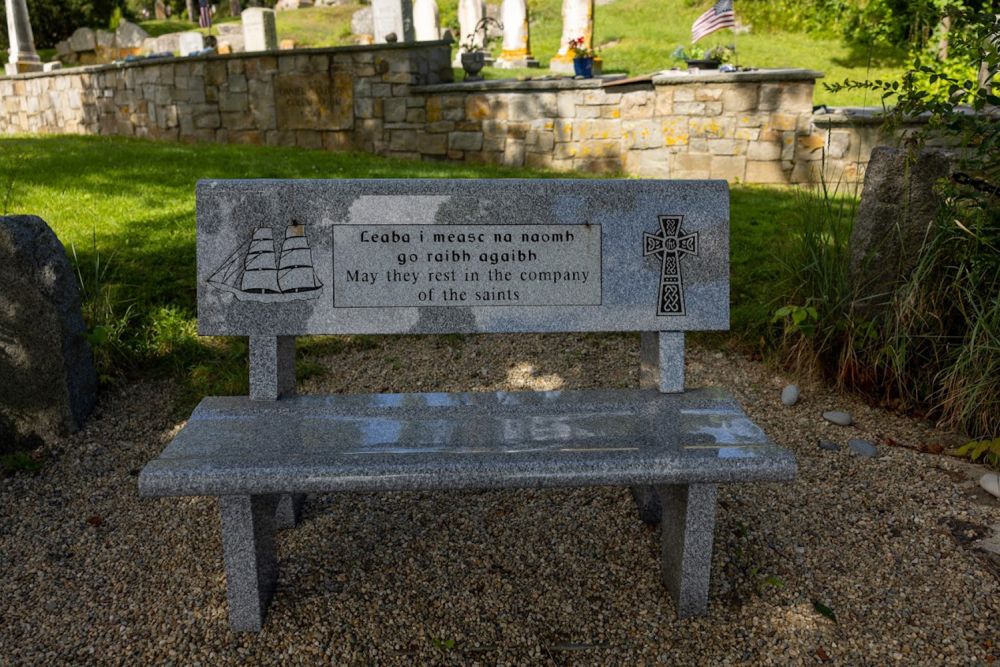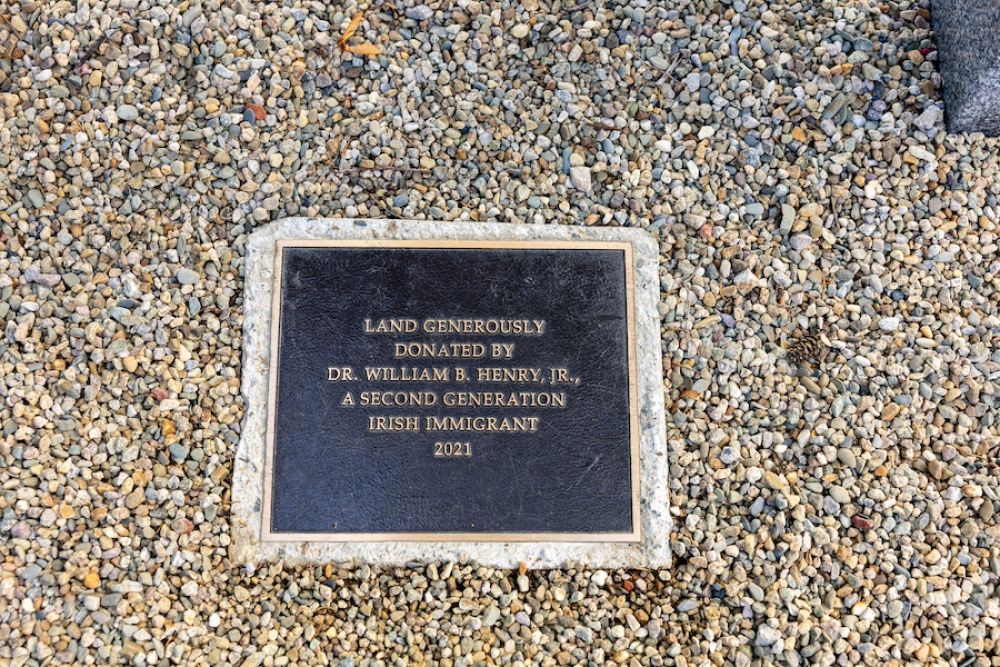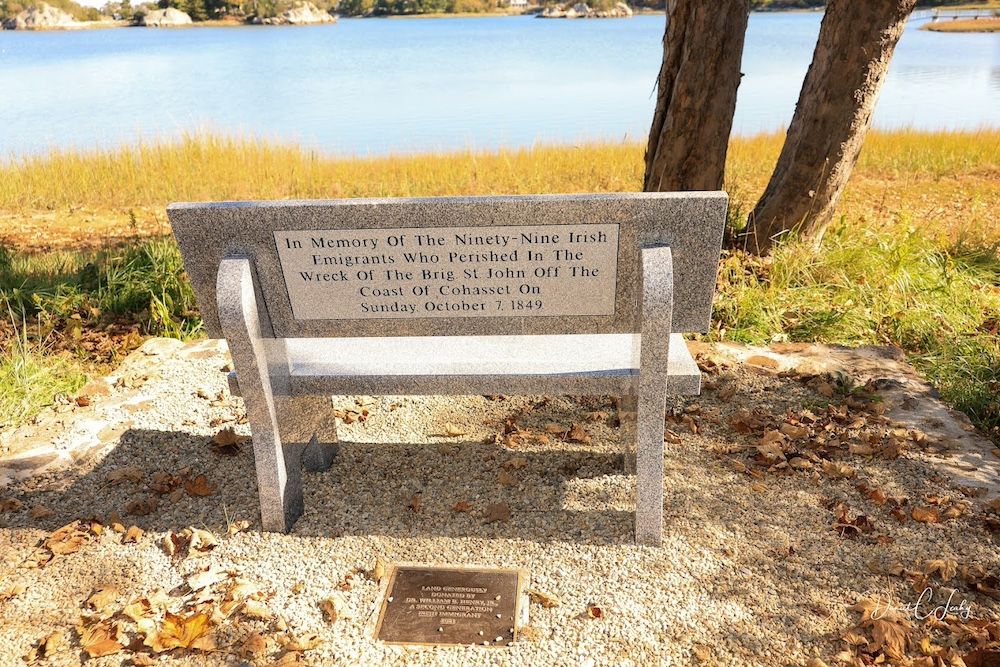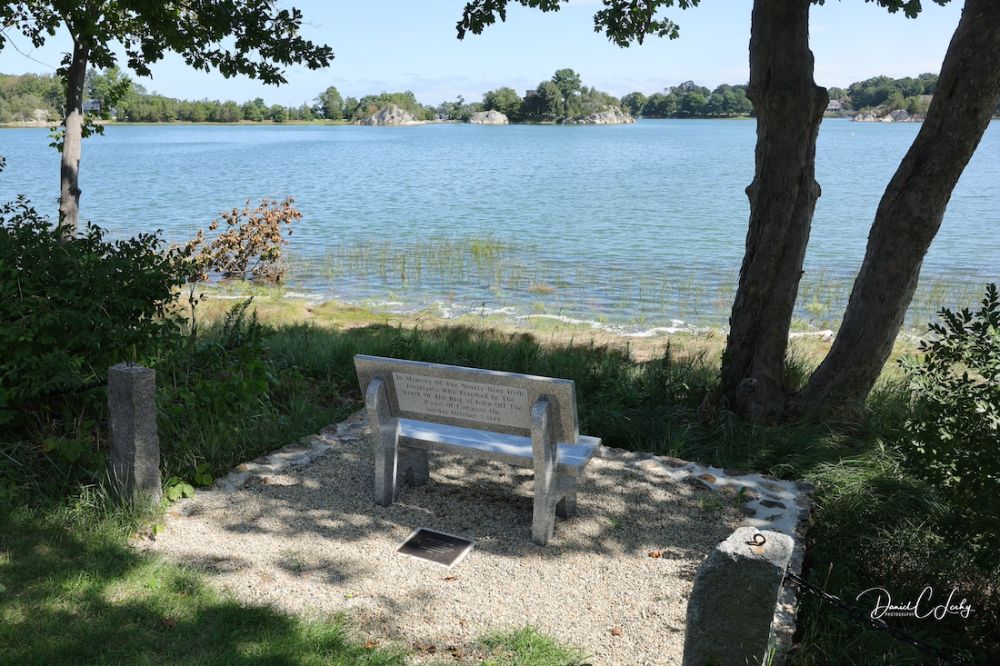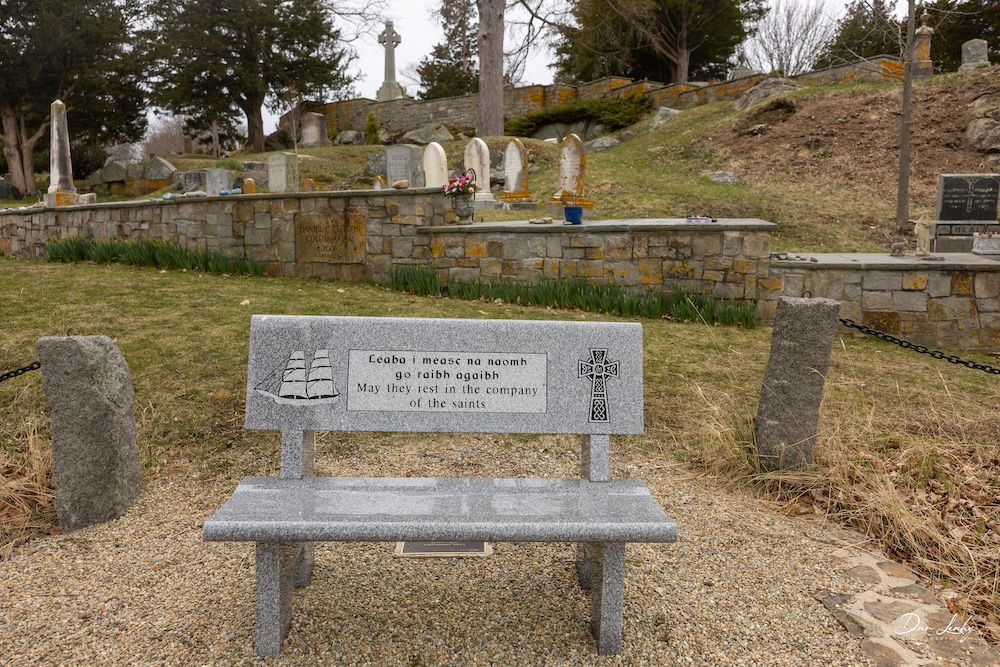
Celtic Brig St. John Bench
This bench was dedicated in 2021 to mark the burial site of 45 of the victims lost aboard the Brig St. John ship in 1849. Above the bench, on the hill, is the 18-foot Celtic Cross monument, dedicated in 1914. The intricately carved cross rests on a three-part base of granite. The Celtic Cross bears the seals of the Ancient Order of Hibernians and its Ladies Auxiliary (L.A.A.O.H.). It reads: "This Cross was erected and dedicated May 30, 1914, by the A.O.H. and L.A.A.O.H. of Massachusetts to mark the final resting place of about 45 Irish emigrants from a total company of 99 who lost their lives on Grampus Ledge, off Cohasset, October 7, 1849, in the wreck of the Brig St. John from Galway, Ireland."
The marker features the seals of the Ancient Order of Hibernians (clasped hands, harp, rising sun, ivy, and shamrocks) and the L.A.A.O.H. (clasped hands, harp, ivy, and shamrocks). The remains of 45 Irish immigrants killed in this wreck are buried in a common grave below the top of the north hill, marked by the Brig St. John Bench. The brig was carrying over 100 famine refugees from the Irish counties of Galway and Clare and a crew of about 16 and was bound for Boston in October of 1849 when a storm blew the vessel off course as it approached Massachusetts Bay. The ship anchored near Minot's Ledge outside Cohasset Harbor to ride out the storm, but the anchors failed to hold. The ship ran aground on a submerged ledge and broke into two pieces. Only about 20 individuals survived the wreck. Writer Henry David Thoreau visited Cohasset after reading of the wreck in the Boston newspaper. Thoreau later recounted the story of the St. John in the first chapter of his book, Cape Cod. The Rev. Joseph Osgood of the Cohasset Unitarian Church initially performed services, but this was unacceptable to the Catholic Church. Summoned was Father John Roddan of St. Mary's Parish in West Quincy, who performed the Catholic funeral rites and the Eucharist. This was the first Catholic presence and burial in the Town of Cohasset. Though buried and memorialized in 1849, it was not until 1914 that a marker officially commemorated the gravesite. That year, the Ancient Order of Hibernians erected an 18-foot Celtic cross to commemorate the accident. Sadly, Minot's Ledge Lighthouse, located one mile off the perilous rocky coastline, was finished in 1850, only three months after the wreck of the Brig St. John.
For more information, see the article: "The tragic wreck of the Irish “famine ship” St. John."
Gallery (click any image to view the slideshow)
Celtic Brig St. John Bench
- Plaques 1-32
- David Bates
- Levi Willcutt
- John Jacob
- Ignatius Orcutt
- Rev. Nehemiah Hobart
- Deacon Abel Kent
- Rev. John Browne
- Abel Kent
- Bethiah "Resolution" Nichols Tower
- Abraham Tower
- Abraham Hobart Tower
- Isaac Lincoln
- Paul Pratt
- Margaret Tower, Ibrook Tower
- Daniel Tower
- Gilbert S. Tower
- Thomas Stevenson
- John Stephenson
- Capt. James Hall, Persis Tower Hall
- Elijah Lincoln
- Sarah Pratt
- Cousens Family
- Capt. George Hall
- Ezekiel Stetson, John Stetson, Lydia Stutson
- Urian Oakes
- James Stoddard
- Aaron Pratt
- Christopher James
- Phineas/Aaron Pratt Family Monument
- William Hanlon
- Thomas W. Clarke
- James W. Nichols
- Plaques 33-39
- Plaques 40-54
- Charles B. Nichols
- Helen Howes Vosoff
- Levi B. Gaylord
- Edward Tower
- Francis W. Hagerty, Mary F. Hagerty
- Howard S. Reid, MD
- Richardson White
- Vietnam Casualties
- Marion H. Gibson Woods
- Jessie Bancroft Cox, William C. Cox, Jane Steele Cook
- Lawrence P. Barrett
- Stuart Robson
- George H. Mealy
- Samuel L. Jenkins
- Joseph H. Smith
- Plaques 55-64
- Artistic Features

